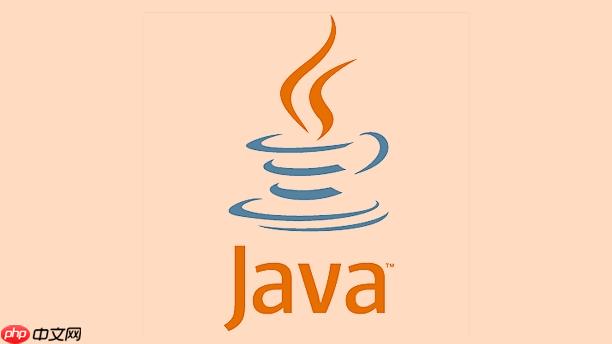方法级权限控制在spring security中通过@enablemethodsecurity启用,并使用@preauthorize、@postauthorize等注解实现。①启用配置:在配置类上添加@enablemethodsecurity,激活方法级安全控制;②常用注解:@preauthorize结合spel表达式实现执行前权限检查,@postauthorize根据返回值进行执行后校验,@secured和@rolesallowed用于基于角色的简单控制;③自定义permissionevaluator:通过实现haspermission方法支持更复杂的权限逻辑,如判断用户对特定资源的操作权限,并需注册到methodsecurityexpressionhandler;④优势与考量:相比url级控制,方法级权限更细粒度且贴近业务逻辑,适用于不同操作共用路径的场景,但需注意spel及permissionevaluator中的性能问题,避免耗时查询或重复逻辑。

Spring Security中实现方法级权限控制,在我看来,是构建健壮应用安全体系不可或缺的一环。它允许我们对单个方法调用进行细粒度的访问控制,远比仅仅依赖URL路径匹配来得精准和安全。这就像给每扇门都配上独立的锁,而不是只守着大门,确保只有被授权的人才能执行特定的操作,即便是通过合法的入口进入。

要启用Spring Security的方法级权限控制,核心在于配置。在Spring Boot应用中,你通常会在一个配置类上加上@EnableMethodSecurity(Spring Security 5.2+推荐,更早版本是@EnableGlobalMethodSecurity,并指定prePostEnabled = true等)。
这个注解一开,魔法就开始了。我们就可以在具体的方法上使用Spring Security提供的注解来定义权限规则了:

@PreAuthorize: 这是我个人最常用的一个。它在方法执行之前进行权限检查。你可以在这里使用Spring Expression Language (SpEL) 来编写复杂的逻辑。比如,@PreAuthorize("hasRole('ADMIN')") 表示只有管理员角色才能访问;@PreAuthorize("#userId == authentication.principal.id or hasRole('ADMIN')") 则表示用户ID匹配当前登录用户,或者拥有管理员角色。这种灵活性,简直是权限控制的瑞士军刀。
@Service
public class ProductService {
@PreAuthorize("hasRole('ADMIN') or @securityService.isProductOwner(#productId, authentication.name)")
public Product getProductDetails(Long productId) {
// ... 获取产品详情
return new Product();
}
@PreAuthorize("hasPermission(#product, 'write')") // 结合PermissionEvaluator
public Product updateProduct(Product product) {
// ... 更新产品
return product;
}
}@PostAuthorize: 这个注解在方法执行之后进行权限检查,并且可以访问方法的返回值。虽然不如@PreAuthorize常用,但在某些场景下,比如需要根据返回的数据内容来决定是否允许访问时,它就很有用。例如,@PostAuthorize("returnObject.owner == authentication.name")。

@Secured: 这是一个更简单的注解,基于角色的权限控制。你只需要指定用户必须拥有的角色列表。例如,@Secured({"ROLE_USER", "ROLE_ADMIN"})。它不支持SpEL表达式,所以功能相对有限。
@RolesAllowed: 这是JSR-250标准定义的注解,功能上和@Secured非常相似,也是基于角色的。如果你更倾向于使用标准化的注解,它是个不错的选择。
实际开发中,我通常会倾向于@PreAuthorize,因为它提供了最大的灵活性。结合SpEL,几乎所有你能想到的权限逻辑都能在这里实现。
URL级别的权限控制,比如通过配置拦截器或过滤器链,确实能快速实现对整个URL路径的访问限制。例如,"/admin/**" 路径只有管理员能访问。这很直观,也很容易上手。但问题在于,它太“粗粒度”了。
想象一下,你有一个 /api/products/{id} 的API。
如果只做URL级别控制,你可能允许所有认证用户访问这个路径。
但实际业务逻辑是:
如果只靠URL级别,你可能需要为更新和删除操作再创建独立的URL,比如 /api/products/{id}/update 和 /api/products/{id}/delete,然后分别配置权限。这无疑增加了API设计的复杂性,也可能导致不必要的冗余。
而方法级权限控制,就是针对这种场景的“解药”。它直接作用于业务方法,无论这个方法是通过哪个URL路径被调用(甚至不通过URL,比如内部服务调用),它的权限规则都会被强制执行。这符合“安全默认拒绝”的原则,即默认情况下不允许访问,除非明确授权。它让你的安全策略更贴近业务逻辑,而不是简单地绑定到HTTP请求路径上。在我看来,这是构建一个真正安全且可维护的系统,不可避免的选择。
SpEL(Spring Expression Language)是Spring框架提供的一种强大的表达式语言,它在@PreAuthorize和@PostAuthorize中发挥着核心作用。掌握SpEL,你就能把权限逻辑玩出花来。
最常见的用法是访问安全上下文(Security Context)中的信息。authentication 对象是你的好朋友,它包含了当前用户的认证信息,比如用户名 (authentication.name)、用户主体 (authentication.principal) 以及拥有的权限 (authentication.authorities)。
例如,如果你想检查当前用户是否是某个资源的拥有者,并且这个资源ID作为方法参数传入:
@PreAuthorize("#resourceId == authentication.principal.id")
这里的 #resourceId 就是引用了方法的 resourceId 参数。authentication.principal 通常会是你的 UserDetails 实现类实例,你可以直接访问它的属性,比如 authentication.principal.username 或 authentication.principal.getUserId() (如果你的 UserDetails 实现了 getUserId 方法)。
再复杂一点,你可能需要调用一个服务来判断权限:
@PreAuthorize("@permissionChecker.canEdit(#productId, authentication.name)")
这里的 @permissionChecker 会引用Spring容器中名为 permissionChecker 的Bean,然后调用其 canEdit 方法。这让权限逻辑可以被封装和复用,避免在注解里写一堆重复的代码。
我遇到过一个场景,需要判断用户是否属于某个组织,并且该组织有权访问特定数据。我当时这么写的:
@PreAuthorize("hasRole('ADMIN') or @organizationService.isUserInOrganization(authentication.principal.id, #organizationId) and @organizationService.hasPermissionForData(#organizationId, #dataId)")
这看起来有点长,但它清晰地表达了:要么是管理员,要么用户在指定组织内且该组织对特定数据有权限。这种组合能力,是SpEL真正厉害的地方。
要注意的是,SpEL表达式的计算是在方法执行前进行的,所以性能上需要考虑。避免在SpEL中执行过于耗时的数据库查询或外部服务调用,如果确实需要,可以考虑将这些复杂的逻辑封装到单独的Bean方法中,并可能进行缓存。
虽然SpEL已经很强大了,但有时你会发现,仅仅通过SpEL来表达所有权限逻辑会变得非常冗长和重复。特别是当你需要实现更抽象的“权限”概念,比如“用户A能否对资源B进行操作C”这种通用模式时,PermissionEvaluator就成了你的救星。
PermissionEvaluator是Spring Security提供的一个接口,它允许你自定义hasPermission表达式的解析逻辑。它的核心方法有两个:
hasPermission(Authentication authentication, Object targetDomainObject, Object permission)hasPermission(Authentication authentication, Serializable targetId, String targetType, Object permission)我通常会选择实现第二个方法,因为它更通用。
假设你有一个“编辑”权限,你需要判断当前用户(authentication)能否编辑某个特定ID(targetId)的“产品”(targetType)。
实现步骤:
创建自定义PermissionEvaluator:
@Component
public class CustomPermissionEvaluator implements PermissionEvaluator {
@Autowired
private UserService userService; // 假设有用户服务来获取用户角色或权限
@Autowired
private ProductRepository productRepository; // 假设有产品仓库来获取产品所有者
@Override
public boolean hasPermission(Authentication authentication, Object targetDomainObject, Object permission) {
if (authentication == null || !authentication.isAuthenticated() || !(permission instanceof String)) {
return false;
}
String perm = (String) permission;
// 示例:如果targetDomainObject是Product类型,判断当前用户是否是其拥有者
if (targetDomainObject instanceof Product) {
Product product = (Product) targetDomainObject;
if ("write".equals(perm) || "delete".equals(perm)) {
return product.getOwnerId().equals(((UserDetails) authentication.getPrincipal()).getUsername());
}
}
return false; // 默认拒绝
}
@Override
public boolean hasPermission(Authentication authentication, Serializable targetId, String targetType, Object permission) {
if (authentication == null || !authentication.isAuthenticated() || !(permission instanceof String)) {
return false;
}
String perm = (String) permission;
String username = ((UserDetails) authentication.getPrincipal()).getUsername();
if ("Product".equalsIgnoreCase(targetType)) {
// 假设你需要从数据库加载产品来检查所有者
return productRepository.findById((Long) targetId)
.map(product -> {
if ("write".equals(perm) || "delete".equals(perm)) {
return product.getOwnerId().equals(username) || userService.isAdmin(username);
}
return false; // 其他权限类型默认拒绝
})
.orElse(false);
}
// 可以扩展到其他targetType,比如"Order", "User"等
return false; // 默认拒绝
}
}注册PermissionEvaluator:
你需要将这个自定义的PermissionEvaluator注册到Spring Security的MethodSecurityExpressionHandler中。
@Configuration
@EnableMethodSecurity // 或者 @EnableGlobalMethodSecurity(prePostEnabled = true)
public class MethodSecurityConfig {
@Autowired
private CustomPermissionEvaluator customPermissionEvaluator;
@Bean
public MethodSecurityExpressionHandler methodSecurityExpressionHandler() {
DefaultMethodSecurityExpressionHandler expressionHandler = new DefaultMethodSecurityExpressionHandler();
expressionHandler.setPermissionEvaluator(customPermissionEvaluator);
return expressionHandler;
}
}使用方式:
在方法上你就可以这样用了:
@PreAuthorize("hasPermission(#productId, 'Product', 'write')")
或者如果你直接传入对象:
@PreAuthorize("hasPermission(#product, 'write')")
考量:
PermissionEvaluator内部进行数据库查询或其他耗时操作时要特别小心。每次方法调用都会触发权限评估,如果这里面有N+1查询或者慢查询,性能会急剧下降。可以考虑引入缓存机制,或者在业务逻辑层预先加载所需数据。PermissionEvaluator让权限逻辑与业务逻辑解耦,提高了代码的可维护性。它专注于“谁能对什么做什么”的判断,而业务方法则专注于“做什么”。PermissionEvaluator的通用性会大大简化权限管理。你只需要在hasPermission方法中增加对不同targetType和permission的处理逻辑即可。总的来说,PermissionEvaluator是处理复杂、抽象权限逻辑的利器。它让你能够以一种更结构化、更可维护的方式来定义和检查权限,而不是把所有逻辑都堆砌在SpEL表达式里。
以上就是Spring Security实现方法级权限控制的详细内容,更多请关注php中文网其它相关文章!

每个人都需要一台速度更快、更稳定的 PC。随着时间的推移,垃圾文件、旧注册表数据和不必要的后台进程会占用资源并降低性能。幸运的是,许多工具可以让 Windows 保持平稳运行。

Copyright 2014-2025 https://www.php.cn/ All Rights Reserved | php.cn | 湘ICP备2023035733号